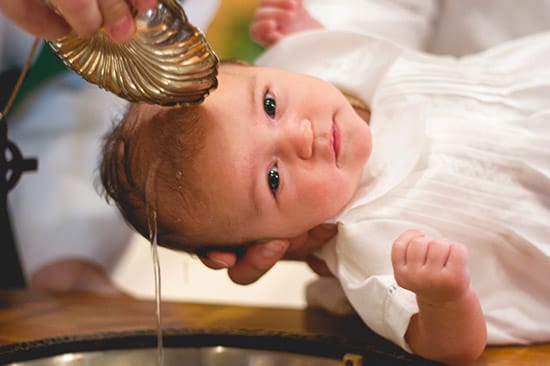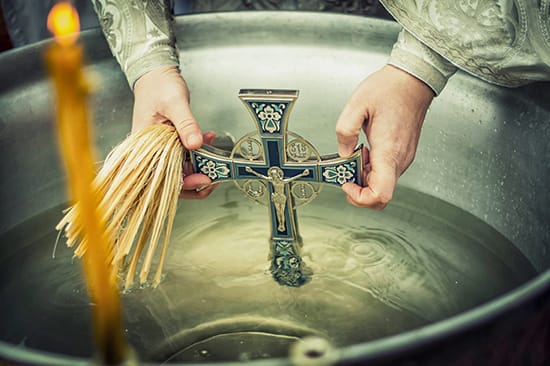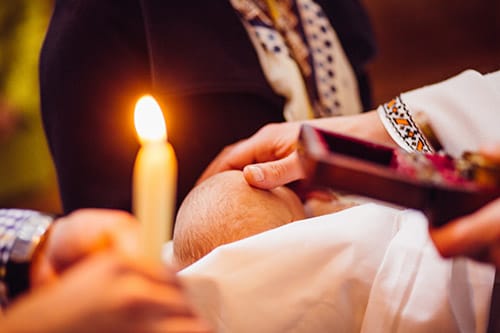How To Perform a Baptism
Baptism is a supremely meaningful event in a person's life, signalling their formal admittance into a faith community. Although most closely associated with Christianity, baptism is a practice found in many religions around the world. The exact nature of the baptism rituals may differ (as there are many ways to initiate someone into a church), but the concept remains the same.
Regardless of what religious beliefs a person ascribes to, if they wish to be baptized they will need a certified authority figure who can conduct the baptism ritual. Becoming an ordained minister through the Universal Life Church will allow you to serve in this capacity.

If you've been asked to conduct a baptism but aren't sure what the ceremony should look like, we encourage you to utilize our baptism ceremony script generator to get a feel for the proceedings and create a custom script for the event. You might also consider picking up our Baptism Set, which comes complete with an in-depth guide to performing baptisms as well as several commemorative baptism certificates.
Various Kinds of Baptism Rituals

Christian baptisms are the most commonly practiced form, so it's recommended that you read up on the rites connected with this tradition. If you're unfamiliar with specific aspects of baptisms, or would like more insight, you might consult with more experienced clergy members to learn about the ceremonial rites of a specific faith system. Outside of Christianity, other religions may vary greatly in their approach to initiating new members into the church. Some may prove more flexible in their attitudes, allowing an ordained minister more freedom to conduct the ritual how they see fit. However, others may be strict in their rigid adherence to tradition. Understanding each approach is vital if you wish to conduct baptism ceremonies.
Conducting a Baptism Ceremony
In the realm of Christianity, a baptism involves two main parties: the officiant, typically a person who has earned ordainment, and the person getting baptized. In most cases, the ceremony will begin with a series of blessings and prayers to remove original sin. Adults will be cleansed of all the sins in their lives as well as original sin. Children receiving the blessing may have their parents or godparents with them to support them through this process. Water will then be employed as a symbol of purification and rebirth.
Baptism rituals in Christianity generally take one of two forms: immersion or affusion. Immersion involves the participant being fully submerged in a body of water, while affusion baptism simply includes the sprinkling of water on the participant's forehead. For obvious reasons, immersion is most commonly used for adult baptisms, while the affusion method is used mainly with children. After the baptism is complete, the minister will conclude the ceremony. Although baptisms are not legal ceremonies, it's expected that the officiant provide the participant (or their parents) with a commemorative document denoting basic information, such as the person's name and the location and date of the ceremony.
Finally, if you need help staying organized for an upcoming baptism, consider printing out our handy baptism planning checklist, which will ensure you don't forget any important steps. And if you're interested in what the ceremony itself looks like, check out our baptism training video to learn more.

What Can an Ordained Minister Do?
Many people become ordained ministers because they want to officiate weddings, but we like to remind our members that ULC ordinations open many other doors as well. Officiating a baptism is a wonderful way to perform a meaningful service for your friends and loved ones, allowing you to personalize the ceremony in ways that a traditional minister might not be capable of. Sound interesting? Join the ULC and start officiating today!
